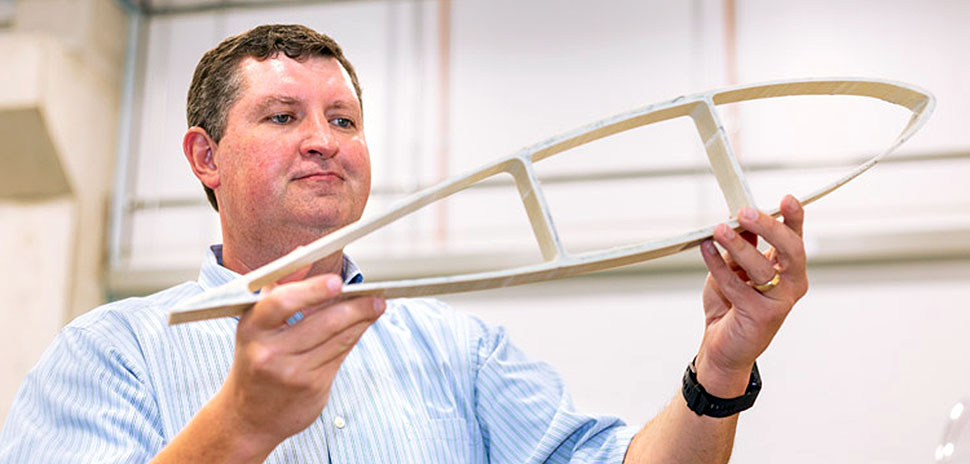![]() Every week, we do a little research of our own. We’re looking for scientists, professors, engineers, entrepreneurs—anybody, really—engaging in research and development across North Texas.
Every week, we do a little research of our own. We’re looking for scientists, professors, engineers, entrepreneurs—anybody, really—engaging in research and development across North Texas.
There’s plenty of good work being done. If you want to put R&D under your microscope, sign up for our e-newsletter.
UTA examines how transit-oriented sites affect property values
A University of Texas at Arlington study identifies the most important factors that can increase housing values near transit-oriented sites.
Ard Anjomani, a UTA professor in the College of Architecture, Planning and Public Affairs, and Saad AlQuhtani, a recent alumnus, are the authors of the study called, “Do rail transit stations affect housing value changes?” It looks at the effects of DFW-area rail transit stations on the housing values in nearby neighborhoods. UTA noted that although DFW is an automobile-oriented region, it has the longest rail system in the nation.
The study’s findings concluded:
- The most important variable in increasing housing values near transit-oriented developments is the number of college-educated residents
- An increase in housing values happens when the number of jobs increases around transit-oriented developments (TODs)
- There’s a positive correlation between housing values and the close location of a nearby entrance ramp to a highway
- An increase in property values surrounding TODs in proximity to shopping malls
- A decrease in housing values near TODs decreased when located near schools
- No significant impact on housing values when a park was nearby
According to the study, compact, mixed-use, high-density, walkable urban projects also improve the affordability of housing in neighborhoods adjacent to rail stations, which also helps increase transit ridership.

Todd Griffith demonstrates his blade design for an offshore floating wind turbine. Griffith is leading a team of UT Dallas researchers and collaborators to build a prototype for the turbine. [Photo: Courtesy UT Dallas]
UTD researcher gets $3.3M grant for floating wind turbine project
A researcher at the University of Texas at Dallas will use a $3.3 million grant from the U.S. Department of Energy to further develop his offshore wind turbine design, something he believes could become one of the nation’s largest sources of renewable energy.
Todd Griffith has been working for years on an offshore turbine design that can convert deep-ocean winds into electricity, according to a statement, and the Advanced Research Projects Agency-Energy (ARPA-E) award provides support for his team to design and build a prototype for a floating offshore wind turbine.
The grant was part of $26 million in funding from ARPA-E for 13 projects to accelerate floating offshore wind turbine technologies through the Aerodynamic Turbines, Lighter and Afloat, with Nautical Technologies and Integrated Servo-Control (ATLANTIS) program, according to a statement.
The DOE’s estimates show that state and federal waters along the U.S. coasts and the Great Lakes could generate twice the amount of energy generated by all of the nation’s electric power plants combined.
“A traditional turbine design is great for land, and it can make sense offshore in shallow waters, but when you build in deep water in the ocean, you need a totally new design,” Griffith, associate professor of mechanical engineering in the Erik Jonsson School of Engineering and Computer Science, said in a statement.
TAMEST conference will explore past and future of innovation in Texas
A multidisciplinary conference on innovation will bring a host of technology experts, scientists, researchers, entrepreneurs, and healthcare leaders to Dallas in January.
TAMEST (The Academy of Medicine, Engineering, and Science of Texas) will host its 2020 Annual Conference: Innovating Texas on Jan. 7 through 9 at the Dallas Fairmont Hotel.
The aim of the conference is to catalyze research commercialization by creating forums of state experts on innovation to work together and map out the future of Texas’ success. The conference, in part, will explore many of the innovation successes in Texas—from Dallas-based and Nobel Prize-winning Texas Instruments (which invented the first integrated circuit in the 1950s) to the first artificial heart transplant at the Texas Heart Institute in Houston—as it seeks to better commercialize and scale the state’s research results for impact.
“Innovating Texas: Research to Commercialization is the chance to bring the brightest minds our state has to offer and think through what is preventing us from leading the country in innovation,” TAMEST 2020 Program Chair and inventor of the Ethernet Bob Metcalfe, Ph.D., said in a statement. “After all, research is not enough to change the world—we must build in better safety nets so our state will more quickly span the various valleys of death that keep successful research from going to scale in world markets.”
For more information on the TAMEST conference, go here.
![]()
Get on the list.
Dallas Innovates, every day.
Sign up to keep your eye on what’s new and next in Dallas-Fort Worth, every day.


































































